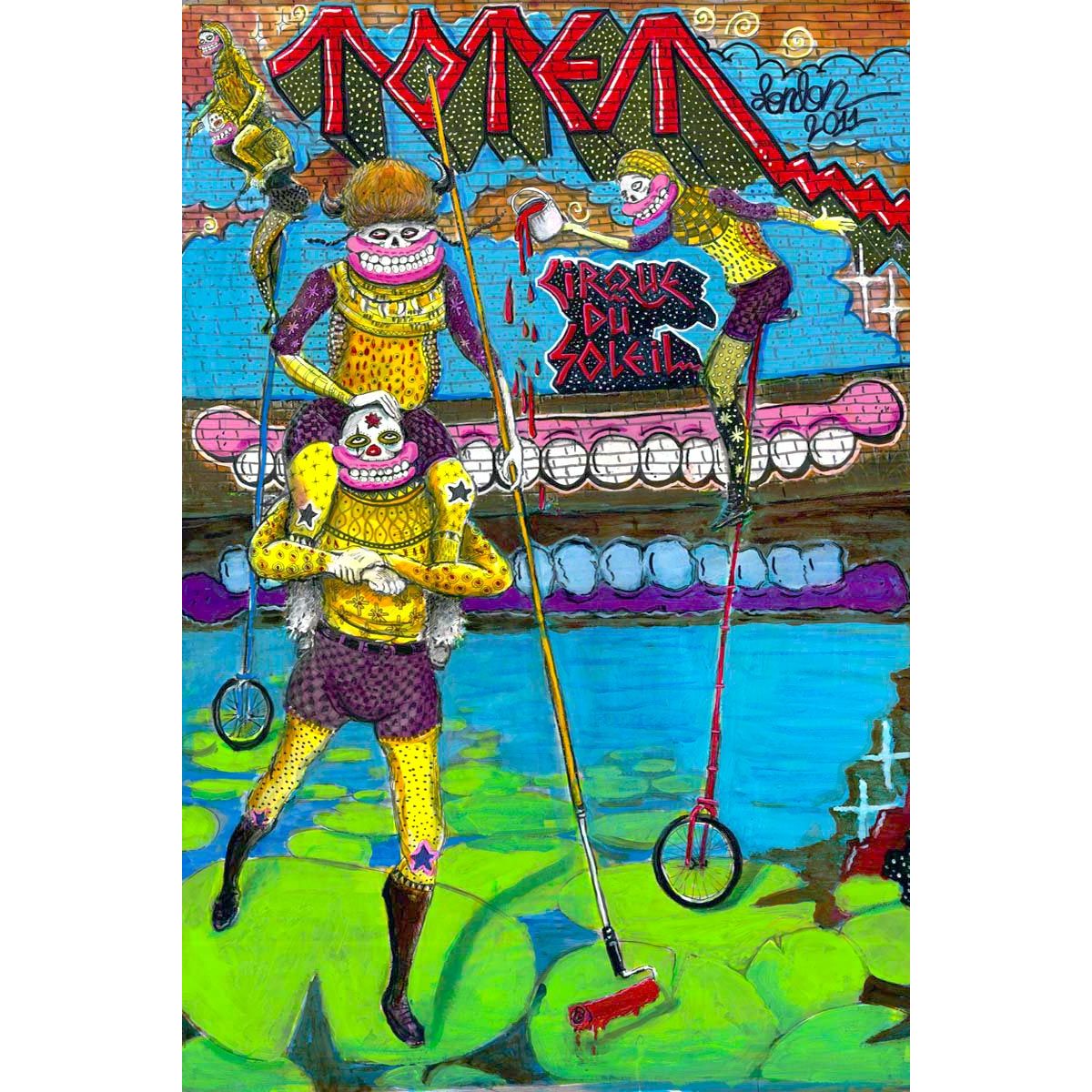ART PRINT
Totem - Sweet Toof
Item Details
Artist
Series
Medium
Venue
About this Medium
Screen printing is a printing technique that uses a woven mesh to support an ink-blocking stencil. The attached stencil forms open areas of mesh that transfer ink or other printable materials which can be pressed through the mesh as a sharp-edged image onto a substrate. A roller or squeegee is moved across the screen stencil, forcing or pumping ink past the threads of the woven mesh in the open areas. Screen printing is also a stencil method of print making in which a design is imposed on a screen of silk or other fine mesh, with blank areas coated with an impermeable substance, and ink is forced through the mesh onto the printing surface. It is also known as silkscreen, seriography, and serigraph. Of all the parts of our body, teeth, crammed into the mouth cave, are a constant reminder that we are merely flesh hanging out to dry on an elaborate chain of bone linkages. The pulpy ripped swollen scarlet and pink flesh that we call the gums, barely tolerate their border-line function as a visual testament to life and death. The mouth itself is in constant crisis. It is the place where stuttering words come forth, where words are taken back, where ‘sweet’ foods begin their rot. Francis Bacon understood that the mouth is at once entrance and exodus. When we scream we also breathe. In order to exhale we must inhale. For Sweet Toof this sway between horror and acceptance is an important part of his work. Sweet Toof’s painting starts with and evolves out of his street art; whether as a solo graffiti artist or in collaboration with others. Typical tags, throw- ups, and more elaborate pieces become a whole language which informs his studio works. Like the streets of 1980’s New York, London’s streets today are being reclaimed by an ever increasing army of street artists of which Sweet Toof is one of the most prolific and artful. Out there, under the swirl of lamplights, billboards and urban detritus, ‘bubble-Gums’ Our Name The term “safe walls” refers to legal spots in the urban landscape for local graffiti artists to do their work without the fear of sanctions. The Poster As A Vital Art Form From the public notices of Antiquity and the first leaflets and placards handed out by traveling performers—which hark back to the end of the 15th century—to the advertisements of contemporary circuses, the poster has had a long and colorful history. With the advent of printing, circuses all over the world were able to produce posters in large quantities for display in public places to attract the attention of passers-by. Generally created by local artists, these visually striking works were the ambassadors of traveling big-top circuses and spread the word of their imminent passage in a city. Like the circus itself, the circus poster of lore exerts a fascination all its own; it strikes the spectator head-on. Poster artists and illustrators have had the uncanny ability to distill enormous amounts of information into iconographic images that penetrate and endure. Posters are designed to mystify, arouse curiosity and the urge to see, but more than mere advertising tools, they have long been recognized as a vital art form—one that shares common roots
Production Details
- Released date n/a
- Retail Price n/a
- Height 33.00"
- Width 23.00"
- Edition 50
- Numbered No
